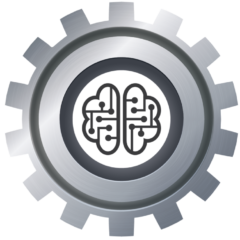Zettelkasten is a powerful and versatile note-taking system that was originally developed by the German sociologist, Niklas Luhmann. Over the years, the method has been adopted by scholars, writers, and students alike for its ability to help them organize and manage their ideas and research.
The Zettelkasten method is sometimes referred to as the slip-box method or the note card method. Companies like Forte Lab, with his Second Brain utilize the core principles.
I personally love the Zettelkasten Method. So much so, dedicating a podcast episode, creating an YouTube mini-series covering it, and utilize it with Notion. I hope these articles will get you interested in trying this awesome note taking method.
At its core, the zettelkasten method involves breaking down complex ideas into smaller, more manageable pieces, or “notes,” which are then organized in a hierarchical system. The notes can be about anything, from quotes and ideas to observations and experiences, and they are usually stored on index cards or digital notes.
The beauty of the zettelkasten method lies in its flexibility. Unlike other note-taking systems that are rigid and prescriptive, the zettelkasten method allows for a great deal of creativity and customization. Here are some of the key principles of the zettelkasten method:
- Atomic notes: The zettelkasten method is based on the idea that ideas should be broken down into their smallest possible components. This means that each note should focus on a single idea, quote, or observation. By keeping the notes small and atomic, it becomes easier to manage and organize them later.
- Connection and associations: One of the key features of the zettelkasten method is its emphasis on making connections between notes. Each note should be linked to other relevant notes, creating a network of ideas and associations. This network of connections can help to spark new insights and ideas, and can also make it easier to find related information later on.
- Hierarchical organization: The notes in a zettelkasten system are usually organized hierarchically, with broad categories at the top and more specific notes at the bottom. This allows for easy navigation and helps to keep related notes together.
- Incremental growth: The zettelkasten system is designed to be an ongoing process, with new notes added gradually over time. As new ideas and insights emerge, they can be added to the system and connected to existing notes, creating a constantly evolving network of ideas.
So, how does the zettelkasten method work in practice? Let’s say you’re working on a research paper about the history of jazz music. Here’s how you might use the zettelkasten method to organize your notes:
- Start by creating a broad category for your research paper, such as “The History of Jazz.”
- Break down the topic into smaller, more manageable subtopics, such as “The Roots of Jazz,” “The Swing Era,” and “The Bebop Revolution.”
- Create atomic notes for each subtopic, focusing on a single idea or observation. For example, you might create a note about the influence of African rhythms on early jazz music.
- Make connections between your notes by linking related ideas together. For example, you might link your note about African rhythms to other notes about the African diaspora and its influence on American culture.
- Organize your notes hierarchically, with broader categories at the top and more specific notes at the bottom. For example, you might place your note about African rhythms under the subtopic of “The Roots of Jazz.”
- As you continue your research, add new notes to the system and connect them to existing notes. Over time, your zettelkasten system will grow and evolve, helping you to develop a deeper understanding of your topic.
The zettelkasten method can be used for a wide range of projects, from writing a book to organizing personal thoughts and ideas. Whether you’re a student, writer, or researcher, the zettelkasten method can help you to stay organized, manage your ideas, and generate new insights and connections.
#infobymattcole
 You can check out Matt’s LinkedIn account, Youtube Channel, or Podcast.
You can check out Matt’s LinkedIn account, Youtube Channel, or Podcast.Introducing my new books, ‘The Art of Critical Thinking’ and ‘The Critical Thinking Model’. Both can be read for free with Kindle Unlimited or $2.99 each via Kindle.





